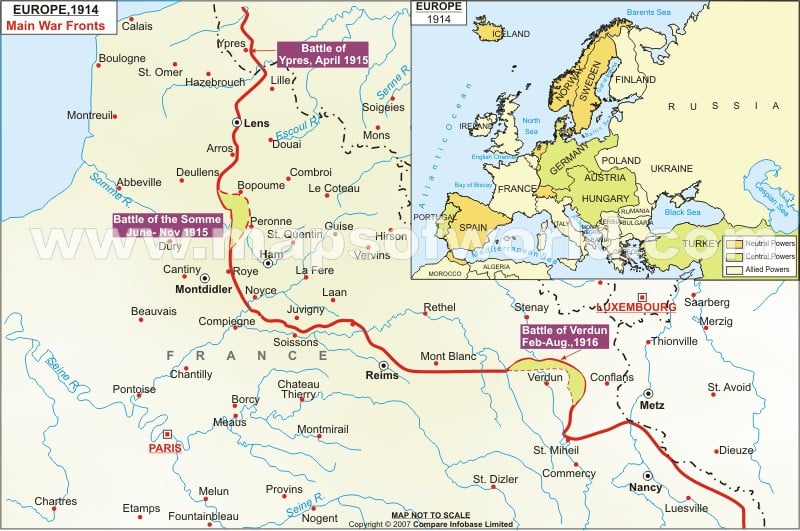
I decided to start off with a basic map of the continent of Europe at the time of World War I. This map shows the countries involved, as well as major cities, the locations of head-turning battles, and other hotspots during the war. As boring as maps can sometimes be, I think that they are so important when it comes to wars, because they provide a visual for an otherwise imaginary process of who gets what land, and who moved who's boundary, and so on.
 This picture, as depressing as it may be, is one of my favorites that I discovered while researching World War I. The destruction and wreckage in the background and the mud covering everything only add to the utter despair portrayed by the soldier's expression. Pictures like this make me wish more than anything that I could travel back in time, to any place at any time, even if it was just for a few minutes. It makes me wonder if this man's life is at all intertwined with mine--you never know. This soldier could be Curran's distant relative, or my mom's great-great-aunt's friend, or anyone! Thinking about things such as this forces me to wonder, yet again: how can anyone dislike learning about history?
This picture, as depressing as it may be, is one of my favorites that I discovered while researching World War I. The destruction and wreckage in the background and the mud covering everything only add to the utter despair portrayed by the soldier's expression. Pictures like this make me wish more than anything that I could travel back in time, to any place at any time, even if it was just for a few minutes. It makes me wonder if this man's life is at all intertwined with mine--you never know. This soldier could be Curran's distant relative, or my mom's great-great-aunt's friend, or anyone! Thinking about things such as this forces me to wonder, yet again: how can anyone dislike learning about history?
Propaganda was a major factor in both the coming about and the result of World War I. The picture on the left is an example, showing a pretty American woman dressed patriotically encouraging the citizens of the United States to plant victory gardens and support their troops. Today, we still have similar propaganda, reminding us of the sacrifice made by the soldiers that protect us. As inspiring as some propaganda may be, it is important to remember that not all of it should be taken to heart. Propaganda can also be used negatively--especially during wars. By "brainwashing" a nation through media, a government can strengthen its people's nationalism to the point of utter hostility, which undoubtedly only results in the worsening of the war.
No comments:
Post a Comment